In 2025, more Shopify merchants add ChatGPT to Shopify store to streamline daily operations, reduce manual workload, and elevate the customer experience. Whether you want to generate product descriptions faster, offer 24/7 support, or guide buyers through product discovery, ChatGPT can help – often without writing a single line of code.
In this guide, we’ll walk you through:
- Why Shopify stores are adding ChatGPT in 2025 and what benefits you can expect
- How to add ChatGPT using Shopify apps for support, recommendations, content, or recovery
- What to do if you only want AI-generated product descriptions
- How to connect ChatGPT via API or code (optional for advanced users)
Let’s dive in and find the best way to bring ChatGPT into your Shopify store.
Why Shopify Stores Are Adding ChatGPT in 2025?
AI adoption in eCommerce has progressed beyond the experimental stage, becoming a practical solution for the challenges that Shopify merchants face daily. With tools like ChatGPT, even small teams can now deliver big-brand experiences: automating tasks, accelerating content creation, and offering smarter support without hiring more people.
Here’s why more store owners are making the move in 2025:
- Handle repetitive customer questions automatically
- Recommend products like a real assistant
- Generate engaging product descriptions faster
- Recover abandoned carts with AI-based prompts
- Improve store experience without hiring more support staff
And it’s not just theory, according to Google’s research, brands that embraced AI campaigns saw up to 85% revenue increases, lowered cost-per-conversion by 26%, and scaled operations across markets 10× faster than expected.
Relevant reading: Top 20+ Best AI Tools for eCommerce Businesses 2025
How to Add ChatGPT to Shopify Store Using Apps
Adding ChatGPT to your Shopify store doesn’t require code, APIs, or complex setups. Thanks to no-code apps, you can integrate AI into your store in minutes, whether you're looking to automate support, boost conversions, or speed up content creation.
Step 1. Choose a ChatGPT-powered Shopify app on specific use cases
Different tools serve different goals. Here’s how to match the right app to what you need ChatGPT to do:
- For customer support FAQs → use HeiChat
- For product recommendations → try Gobot, or configure Tidio
- For writing product descriptions → use ChatGPT manually, TinyIMG AI, or CopyMonkey
- For cart recovery and re-engagement → set up Tidio with exit-intent triggers
- Most of these apps are available on the Shopify App Store with free trials or starter plans, allowing you to test them without risk.
Step 2. Install the app and connect it to your Shopify store
Now, you can head to the Shopify App Store and find the ChatGPT-enabled app you've chosen. Then click “Add app”, approve permissions, and follow any onboarding instructions. Most apps connect to your store automatically, so you do not worry about API keys required.
Step 3. Customize the chatbot or AI tool for your store
Depending on the app and use case, you can:
- Add custom questions and answers for support bots
- Set logic rules for product quizzes or recommendations
- Define tone, structure, or keywords for product descriptions
- Set up triggers (like page visit, cart add, or exit intent) for chat-based engagement
- And many more…
Don’t forget to check if the app supports multiple languages or integrates with your email or CRM system. Below, we have some illustrations that demonstrate how customization works across four core use cases for your Shopify store.
Case 1. Use ChatGPT in Shopify store for customer support automation & 24/7 FAQs handling
One of the most common and high-impact ways to utilize ChatGPT in a Shopify store is to automate responses to frequently asked questions, particularly during peak seasons or following a migration.
With ChatGPT-powered tools like HeiChat, you can automate common support questions while maintaining a natural and conversational experience. What you can do with this app:
- Set up automated replies for common questions like:
- “Where’s my order?”
- “What’s your return policy?”
- “Do you offer international shipping?”
- Customize tone of voice (friendly, helpful, professional)
- Provide instant, 24/7 responses, even when your team is offline
- Use fallback prompts or escalation triggers to hand off complex queries
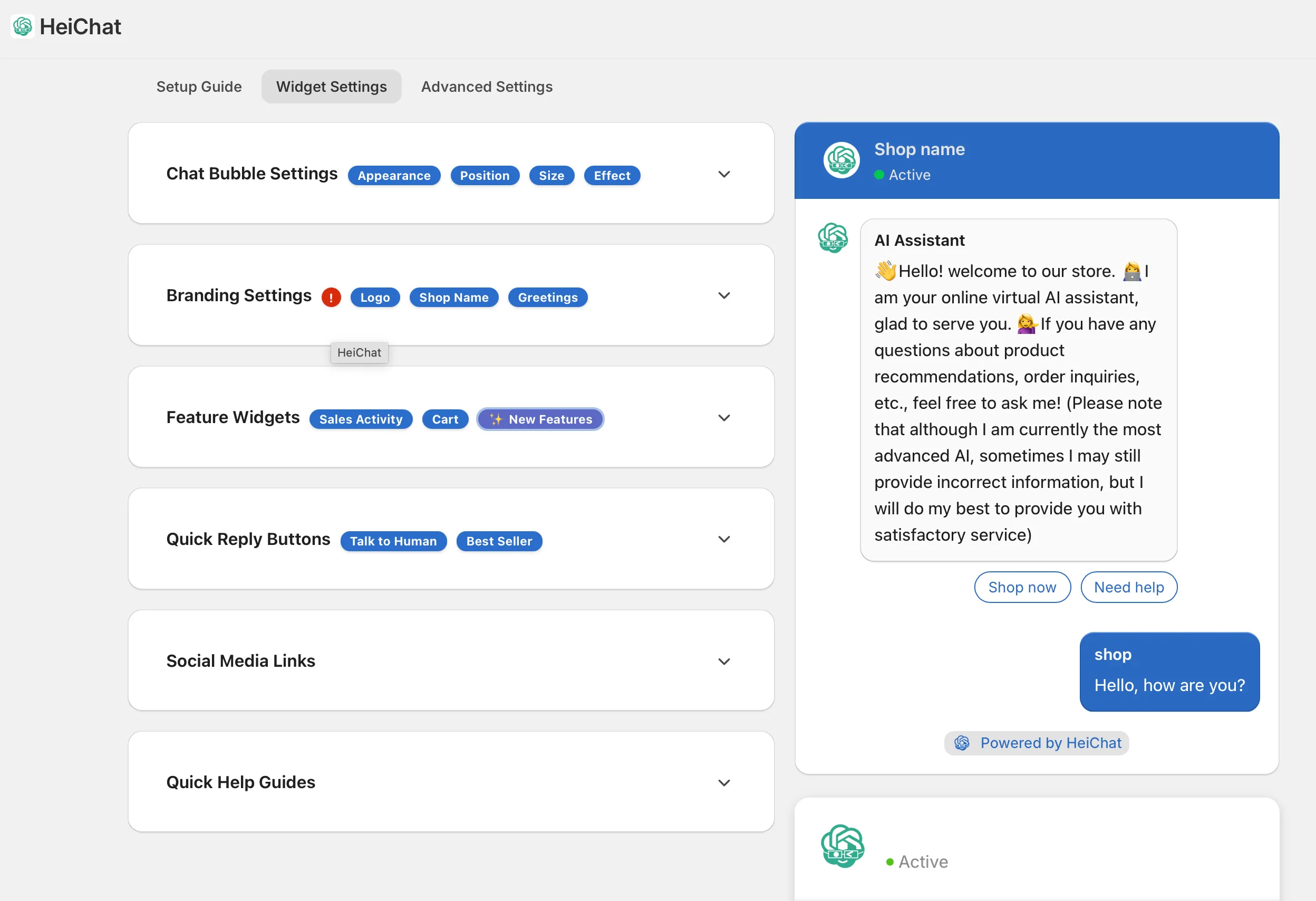
Tip: After migration, support volume often spikes. Setting up a ChatGPT-powered FAQ bot helps deflect repetitive tickets and keeps your inbox focused on high-value requests.
Case 2. Add ChatGPT to Shopify store for writing product descriptions
Writing unique, high-converting product descriptions for every item can be time-consuming, especially after a large import or migration. ChatGPT helps automate this process while giving you more control over tone, structure, and SEO than Shopify Magic alone can provide.
One tool designed for this use case is AI ChatGPT Description.
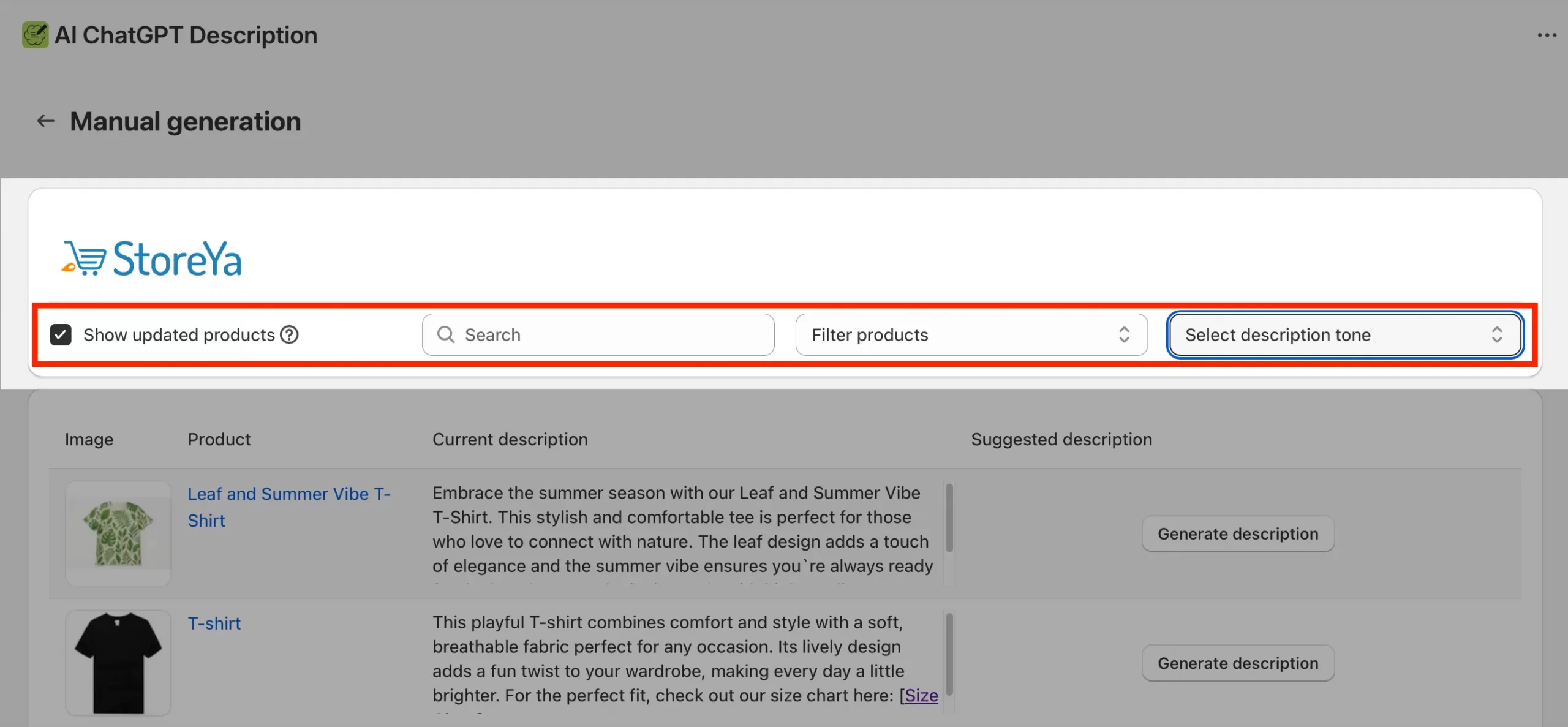
After installing the app, you can manually generate up to 1,000 product descriptions in various languages. For example, if you set the tone to “Focus on the product’s uniqueness” for an item like “Curious Owl – Barn Owl,” the generated copy does reflect the tone.
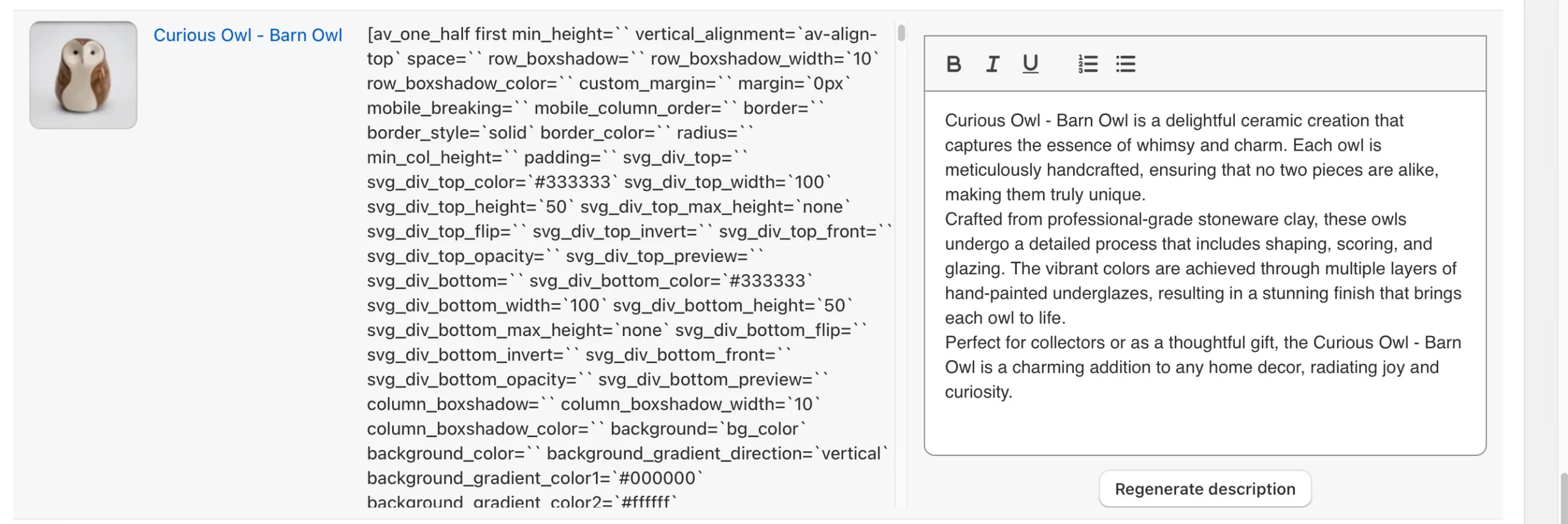
However, the downside is that it requires manual copy-pasting into the Shopify editor, which slows down the process for large catalogs.
For a more seamless experience, Shopify Magic or Sidekick can write and insert descriptions directly into your product listings, saving time on the backend. ChatGPT remains useful for experimenting with content quality and tone before final upload.
Case 3. Use ChatGPT in Shopify store for SEO AI content
Good SEO doesn’t stop at product pages. To rank well and attract organic traffic, many Shopify stores invest in blog posts, buying guides, and branded articles – but producing this kind of content consistently takes time.
That’s where ChatGPT-powered SEO tools come in. These apps let you generate long-form blog posts or short SEO blurbs with full control over tone, format, and optimization.
For example, with Shopify apps like WritePilot, you can configure:
- Title: e.g., The Artist’s Way – Part 1
- Additional info: Add product angles, keyword targets, or seasonal context
- Tone: Friendly, neutral, expert, etc.
- Length & Temperature: Choose how detailed or creative the writing should be
- Format: Output content as HTML or plain text for easy publishing
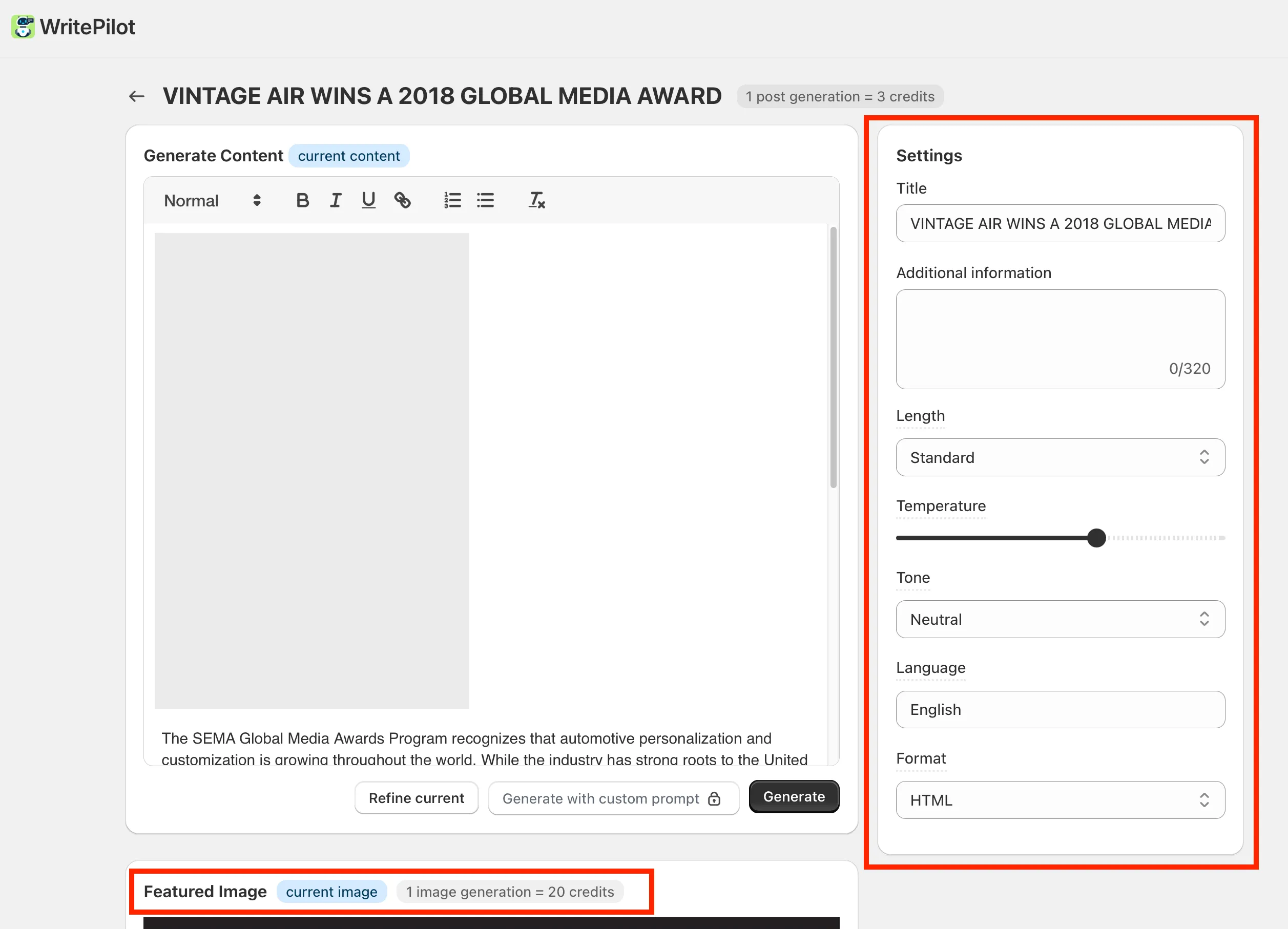
You can use this for writing product how-tos, gift guides, or seasonal roundups that help drive search traffic to your store.
Other use cases you may want to explore
Beyond the core use cases, ChatGPT can also enhance other aspects of your Shopify store, especially if you’re running a complex catalog, a multi-channel strategy, or simply want to offer a more intelligent shopping experience.
Only a few Shopify apps openly state they use the ChatGPT API. Others may use different AI models (or just basic automation) under the hood. So that you should always review app descriptions and feature demos before committing.
Additional use cases to consider:
- For post-purchase support, you can let customers ask and set up ChatGPT to answer based on your order/shipping policies.
- For product education and onboarding, if you sell technical, health-related, or high-consideration products (e.g. supplements, electronics, skincare), use ChatGPT to explain usage instructions, compare models or variants or suggest how-to guides.
- For internal productivity, you can use ChatGPT for behind-the-scenes tasks like summarizing customer reviews and drafting support responses.
These use cases typically require more custom setup or API integration, and may not be supported by Shopify apps yet. They’re most useful for high-SKU stores, international brands, or merchants building custom workflows with OpenAI or third-party connectors like Make or Zapier.
Step 4. Test and launch on your storefront
Before going live, it’s essential to take the time to preview and test your ChatGPT-powered app across various store touchpoints. A smooth AI experience can boost engagement, trust, and conversions, but only if it behaves as expected.
Checklist before launch:
- Preview the chatbot or generated content on both desktop and mobile
- Run test conversations to check tone, logic, and fallback replies
- Review sample product descriptions or content output for accuracy and tone
- Fine-tune any delays, response phrasing, or chat flow structure
- Monitor early performance:
- Customer engagement with chatbot or product quiz
- Improvement in abandoned cart recovery
- Quality of AI-written descriptions or SEO impact
Most apps improve over time by learning from customer interactions, so it's essential to regularly review chat logs or analytics and make small adjustments to achieve better results.
Once everything looks good, you’re ready to publish your assistant or AI content live on your Shopify storefront.
As you can see, this method is beginner-friendly and quick to set up. However, some apps don’t integrate directly into the Shopify admin, and you may need to manage them through a separate dashboard, which can be less convenient for day-to-day use.
What If You Just Want AI-Generated Product Descriptions for Shopify?
Not every store owner needs a full chatbot setup. If your goal is simply to write better product descriptions, especially after importing products or migrating to a new platform, ChatGPT can help.
Shopify’s own tools, like Shopify Magic and Sidekick, already let you auto-generate product copy inside the admin panel. However, if you want:
- More creative control over tone and format
- Consistency across your whole catalog
- Bulk generation or rewriting
- Incorporating SEO keywords and then using ChatGPT (Either the Free or pro version) directly can offer a stronger, more tailored option.
Step 1. Prepare basic product Info
Start with a few essentials: your product title, key features or selling points, and the general tone or style you want the description to follow. You can also include your target audience or relevant SEO keywords to further refine your content.
Step 2. Use ChatGPT to generate content
Head to ChatGPT and prompt it with something like:
“Write a product description for a minimalist leather backpack. Focus on durability, travel utility, and eco-conscious design. Keep the tone modern and concise.”
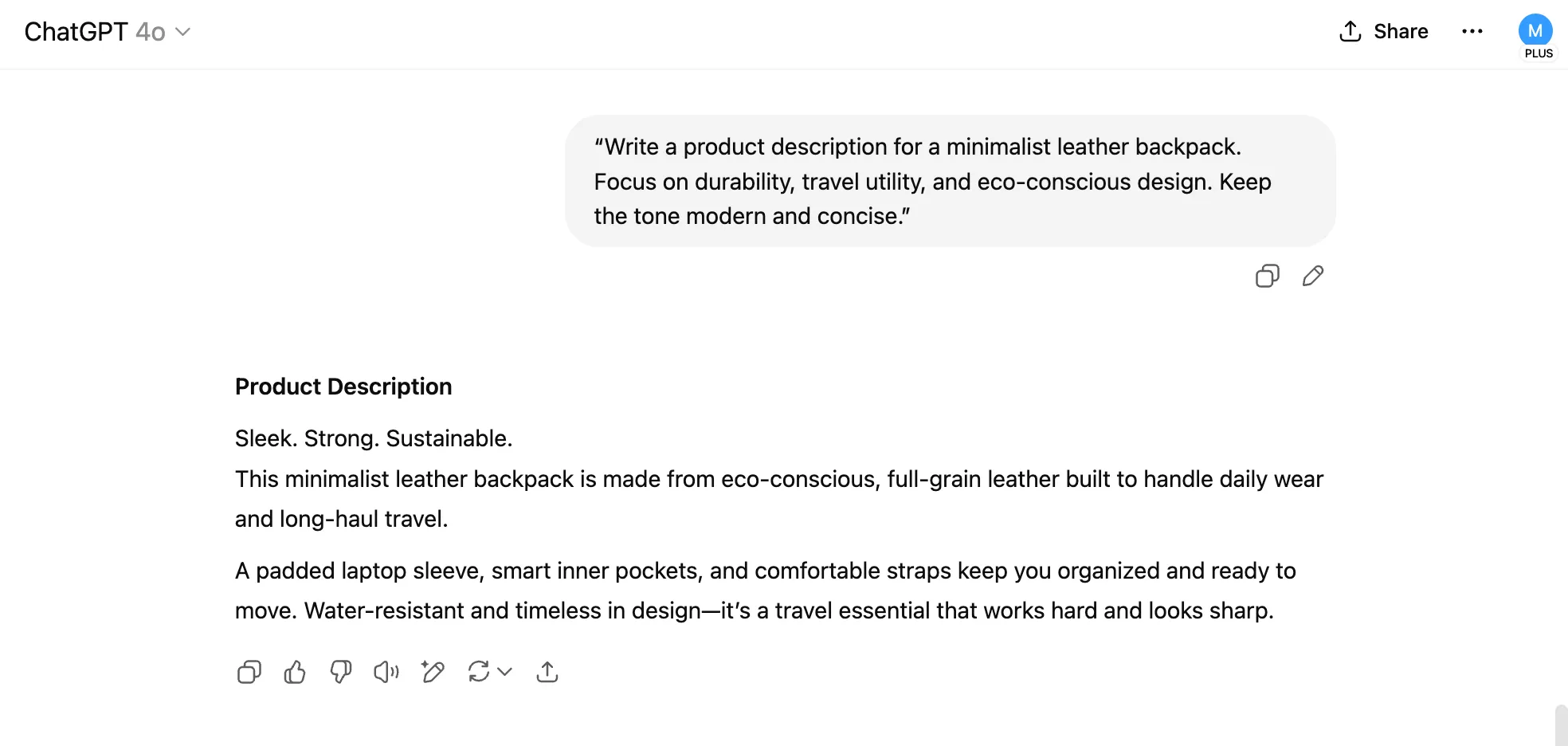
You can generate multiple versions to A/B test or localize content for different audiences.
Step 3. Copy, edit & upload to Shopify
Once you're happy with the result, simply paste it into your Shopify product editor. You can make light edits for formatting or SEO, and you're good to go. For multiple products, you can reuse and adjust your prompts to stay efficient while keeping consistency across the catalog.
I like this method because it gives me full control over tone and content, but it does take more time when handling a large catalog manually.
How to Add ChatGPT to Shopify Store via API or Code (Advanced)
If you want total control over how ChatGPT behaves in your Shopify store, from custom chat logic to real-time support, integrating it via API is the most flexible route. This method is best suited for developers or technically fluent teams.
Step 1. Get your OpenAI API key
First, create an account at OpenAI, then navigate to the API dashboard to generate your API key. This key will authorize requests to ChatGPT and enable you to send and receive content dynamically.
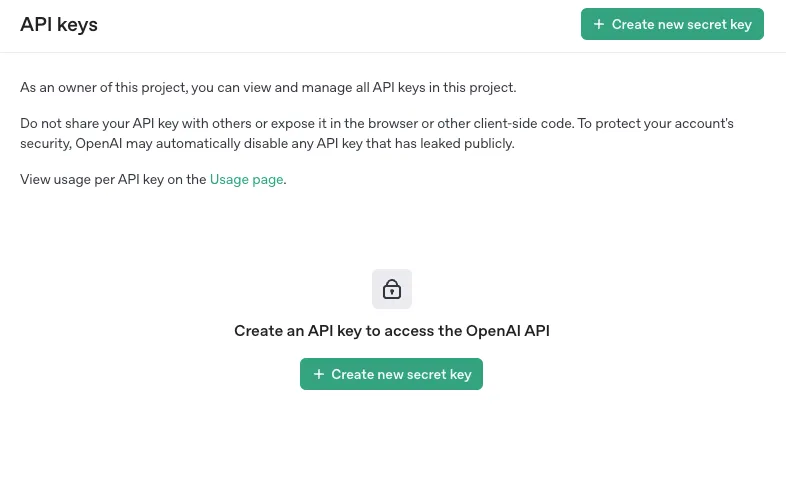
For security, never expose your API key in frontend code and always keep it secure on your backend.
Step 2. Set up a backend to connect Shopify + ChatGPT
You’ll need a lightweight backend (like Node.js, Python Flask, or a serverless function) to act as the bridge between your Shopify store and the ChatGPT API. This backend handles things like:
- Receiving customer messages from your Shopify storefront
- Formatting and forwarding prompts to ChatGPT
- Sending the response back into the store’s UI (e.g., chatbox, product quiz, etc.)
You can host this backend on Heroku, Vercel, AWS Lambda, or any cloud platform.
Step 3. Build and deploy your custom bot or assistant
Once your backend is live, you can design the assistant flow based on your use case:
- A smart FAQ bot embedded in your help center
- A product recommendation chatbot triggered on collection pages
- A post-purchase assistant for order tracking or upsells
Then embed it using one of these methods:
- Shopify ScriptTag API: Inject JavaScript (e.g., chatbot widget) into your storefront.
- Custom Shopify app: For deeper integration and UI flexibility.
Tip: Start with limited functions (such as answering FAQs) before expanding into more complex logic, like user segmentation or cart recovery.
ChatGPT doesn’t know your store by default. While you don’t “train” it directly, you can send your product data, FAQs, or tone guidelines as part of each API call. This helps the AI generate responses that align more closely with your brand.
Overall, I appreciate the flexibility of this method. It does offer full flexibility and control, but it also demands technical skills and time to build and maintain.
How to Add ChatGPT to Shopify Store: FAQs
How do I add ChatGPT to Shopify store?
You can integrate ChatGPT into your Shopify store using third-party apps (like WritePilot or HeiChat: ChatGPT Sales Chatbot), or go deeper with a custom setup via the OpenAI API. The method you choose depends on your goals and technical skills: apps are quick to install, while the API route offers full customization.
Is there a free way to use ChatGPT in my Shopify store?
Yes, you can start using ChatGPT for free by manually generating content (like product descriptions) with ChatGPT Free or Pro and pasting it into your store. Some apps offer free plans or trials, but full chatbot automation usually requires a paid plan or OpenAI API usage.
How do I add an AI ChatBot to my Shopify store?
You can install a chatbot app from the Shopify App Store that uses ChatGPT or similar AI (e.g., HeiChat: ChatGPT Sales Chatbot). You can customize its responses, triggers, and placement, then test it on your storefront. For more advanced needs, you can build your own using the OpenAI API and embed it using Shopify’s ScriptTag API or a custom app.
How do I train ChatGPT with my own Shopify store data?
You don’t train ChatGPT permanently unless you fine-tune a custom model (which is complex and expensive). Instead, you “feed” it your store’s context (such as product information or return policies) in each API call using system messages. Apps that support custom knowledge bases may also let you upload or link your store data.
Is ChatGPT better than other chatbots on the Shopify App Store?
It depends on what you’re looking for. ChatGPT-powered bots excel at engaging in natural conversations, generating product content, and handling open-ended questions. However, many Shopify chatbot apps are designed for specific eCommerce tasks, such as live support, ticketing, or multichannel messaging, even if they don’t utilize ChatGPT.
Final Words
We hope this guide has provided you with a practical and up-to-date understanding of how to add ChatGPT to Shopify store, whether you're using apps, generating content manually, or building your own AI assistant via the API.
If you're looking to grow your store after a platform migration or want to explore more ways to automate and enhance your eCommerce workflow, be sure to check out our Shopify blog section. We publish weekly tips, platform guides, and real-world strategies for modern Shopify sellers.
Want to stay ahead in eCommerce? Join our community and keep building smarter.

